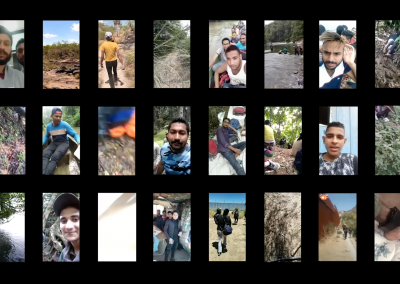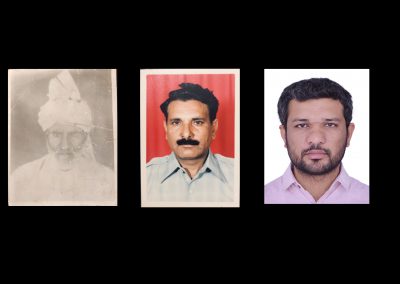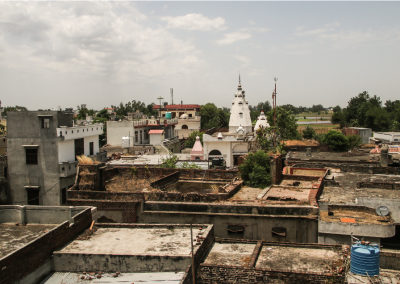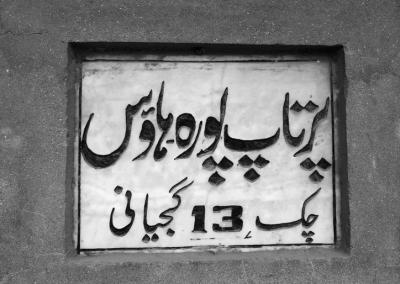Photography/ Art Installation
Eight Acres is a multimedia installation, incorporating photography, video, audio and archival
materials, documenting South American routes used by non-status South Asian migrants
attempting to reach the United States and Canada. This project focuses specifically on
experiences of Pakistani nationals embarking on this journey. The title refers to land that was
given to Pakistani citizens at the time of the Partition of India. These lands have typically been
passed from parent to child, but today people are selling them to fund often perilous journeys
by people lacking official documents and visas who wish to gain entry to Western countries.
Artist’s Statement
Eight Acres is a multimedia installation, incorporating photography, video, audio and archival
materials, documenting South American routes used by non-status South Asian migrants
attempting to reach the United States and Canada. My project focuses specifically on experiences
of Pakistani nationals embarking on this journey. The title refers to land that was given to
Pakistani citizens at the time of the Partition of India. These lands have typically been passed
from parent to child, but today people are selling them to fund often perilous journeys by people
lacking official documents and visas who wish to gain entry to Western countries.
A very sophisticated black market industry has grown up to traffic and smuggle Pakistani and
other South Asian migrants seeking better living conditions. It is one of the most expensive
forms of travel on earth. Eight acres of agricultural land in Pakistan sells for approximately
$50,000, which happens to also be the approximate cost of this voyage through Latin America,
which begins in Brazil and ends at the US border. The cost of this migrant journey is indexed to
the cost of Partition land. It signifies an ongoing economy of migration where land and territory
is currency.
This process is, of course, entirely without any guarantee for travellers that they will be able to
stay in either the United States or Canada. This story touches not only on migration, but also on
international business and social media. For instance the black market companies use WhatsApp
to transmit photos to their Latin American fixers in order to identify clients at different stages of
the journey. In this way social media provides ad hoc identity documents for people lacking
official papers. My project explores the relationship of land, money, access, hope and dreams. I
see this reflected in my interviews, as well as the anonymous yet personal videos uploaded by
travellers, which I have presented in a video grid.
I have documented these journeys by conducting in-depth interviews, with photography, and also
by investigating the role of social media in this process, both in providing grey identity
documents, but also in creating informal marketing and advertising for these businesses. I spent
significant time with each interview subject. My intention is to create a work that describes
broader economic trends and migratory flows, but does not lose emotional resonance. It tells
stories which are both grand and personal.
I also wanted to tie these contemporary migrant stories to my family’s personal history. During
the 1947 Partition of India my family migrated to Pakistan from India. I visited my father’s home
in India for the first time in 2015, and I have included documents and photographs from that
experience. Eight acres was the amount of land my family received in the 1947 land claim that
was meant to compensate for lost property in India.
In 1993, my father was similarly forced to migrate to the Middle East in order to provide for our
family. At that time he sent back audio cassettes that he recorded to keep in touch with us. I
remember listening to these recordings over and over on a portable tape player as a child. I see a
connection in this activity to the way that my interview subjects today use social media and
smartphones to communicate with their families. I also recognize the same joy at hearing from a
loved one, but also the melancholy this separation creates.
My project tries to depict the power signified by land ownership as well as access to land.
lacking other options, many South Asian migrants sell their family land in exchange for a chance
at a new identity and prosperity in the Western world. Travellers’ families acquired that land
through catastrophic struggle with exploitative British colonial rulers. In South Asia agricultural
land confers status, and is representative of wealth. Currently migrants are trading their hard-
fought social position to secure a new identity in the western world.



